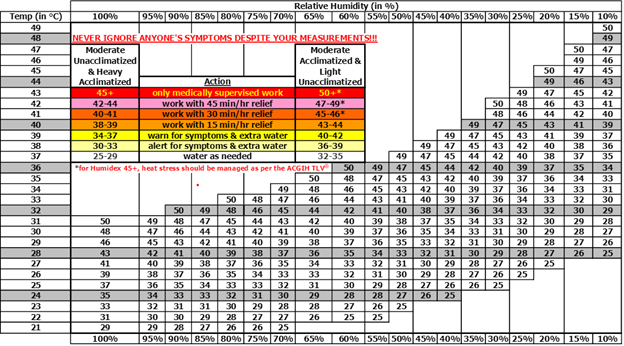Health and Safety – By GSU staff rep Brian Lark
It’s that time of year again and this season has brought on unusually hot weather. We always look forward to the warmer weather after a long cold winter, but there are few things to consider and remember in the glory days of the summer months. Not only are there health risks associated with the hot dry temperatures that we are experiencing; there are also environmental risks.
Fire
With people getting out to enjoy the sunshine or even starting up seasonal tasks, fire is a risk. If you are having a gathering around a backyard fire, be sure to put it out. The burning embers from a cigarette flung from a vehicle window is a common cause of wildfires. Poorly maintained equipment moving down the road also presents a risk of fire as sparks can cause the dry grass to ignite and burn out of control.
Be sure to extinguish all fires when not attending them, if there is a fire ban issued, please adhere to the requests of your municipality until it is lifted. Smoking is no longer permitted indoors of establishments so if you do need to satisfy your craving, please be responsible enough to butt out your cigarette in an approved ashtray to help ensure that the risk is gone. Finally, please be sure that all vehicles and equipment are in good working order prior to operating. A poorly maintained piece of equipment is not only a potential fire hazard, but is also a real safety risk to the operator.
Factor in the Humidity
If you find yourself working, or playing outside in the heat of the day there are personal safety risks to consider. Remember, it’s not just the temperature that matters, you also need to factor in the humidity. The hotter and more humid it is, the more breaks you need to take.
There are different levels of risk when exposure to higher temperatures and they all have their own symptoms.
Heat Rash and Sunburn
Heat rash and sunburn are the entry level medical concerns when working outside. A heat rash is often a cluster of small red bumps/blisters. They often form on the neck, chest, groin area or the creased in the elbow. The remedy is to stay in a cool dry place, keep the rash dry and use baby powder to sooth the rash.
We have all experienced a sunburn or know someone who has. This is the next stage; it can range from a reddening of the skin to blisters. The area will be warm to the touch and can be extremely painful. If you do get burned stay out of the sun as much as possible, cover the skin if you must be outdoors. Apply cool cloths or take a cool bath to help remove the heat. Once the skin is cooled down put on a moisturizing lotion and do not break open the blisters. Open sores can become infected and lead to different complications.
Heat Exhaustion and Stroke
The next and final stages are heat exhaustion and stroke. Heat exhaustion symptoms are profuse sweating, cold, pale, clammy skin. A fast weak pulse, often nausea or vomiting. Muscle cramps, tiredness or weakness, dizziness, headache and finally fainting spells. If you or someone you are observing exhibit these symptoms move to a cool place out of the sun. loosen tight clothing (untuck shirt, undo a couple of buttons, loosen belt and boots). Use cool cloths or a cool bath to bring down body temperature and just sip water, don’t drink lots at once this will add to the nausea feelings. You should seek medical attention if you vomit, symptoms get worse or last longer than an hour.
Heat stroke is the most serious condition from working in high temperature areas. The body will be exhibiting fever like symptoms. A body temperature of 103 degrees or higher. Skin is hot, red, and damp to dry. You stop sweating and exhibit a fast strong pulse. Headache, dizziness, nausea, confusion, and fainting spells. If you experience these symptoms immediately call 911. Move the person to a cooler place and try to lower the temperature with cool cloths or a cool bath. Do not give them anything to drink the body will not accept it in this condition and the person will vomit.
So now you know what to watch out for but how do we keep ourselves out of harm. Put on clothing to keep the skin covered. Use sunscreen on any exposed areas, the higher the SPF the better. Aways wear a hat to help shield your body and head from the sun. Drink lots of water to keep hydrated. Ice cold water may cause stomach cramps so drink it cool or room temperature. Coffee will increase internal body temperature so not an adequate liquid for heat exposure. Alcohol and sugary drinks are also not a wise choice. These types of drinks will in fact increase dehydration. Take breaks away from the heat. In the shade or inside an air-conditioned building is preferred. At the top of this story is a Canada OH&S table regarding high temperature work as well as humidity rating. If we all follow these guidelines, we can keep ourselves and those around us safe.

